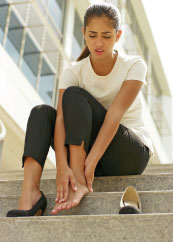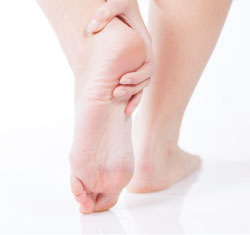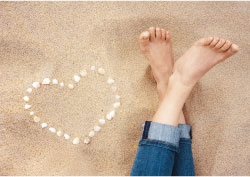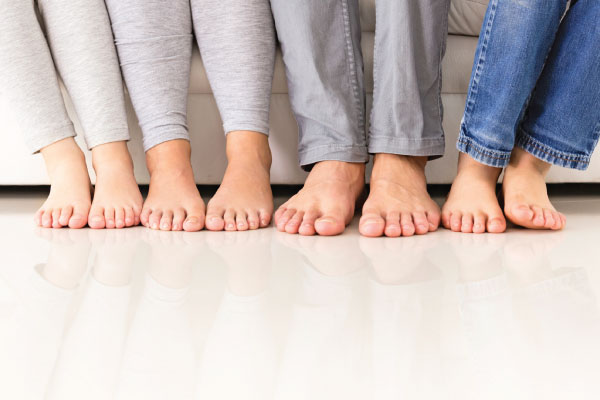We run on them to stay fit, we stand on them in serpentine queues and we squeeze them into pointy pumps. Your feet are the most pressured parts of your body, notes Behnaz Sanjana. After all, you’re on them all day, every day!
Your feet are a clever engineering marvel. They share over 50 bones between them; almost one quarter of all the bones in your body. Add to that 60 joints and a couple of hundred muscles, tendons and ligaments that help them function.
Simply walking puts tonnes of force on our feet, making them undergo a lot of wear and tear over the course of our years. It’s a tough world for our tootsies, and they sure deserve some TLC (Tender, Loving and Care) every day, not just the occasional pedicure.
Foot problems aren’t only cosmetic, like dry feet or yellow toenails. A lot of people suffer painful foot conditions but have little idea how to remedy them. Here are few of the most common foot afflictions:
Bunions
We assure you, a bunion is nowhere as cute as it sounds. Orthotist Ashish Yamba of the American Foot & Ankle Centre explains: “A bunion develops when the first bone of the foot turns outward and the big toe points inward (toward the other toes), causing the joint to jut out.”
 Bunions can be a genetic inheritance, depending on the shape and structure of the foot. “Low arches, flat feet and loose joints and tendons all increase the risk,” says Ashish.
Bunions can be a genetic inheritance, depending on the shape and structure of the foot. “Low arches, flat feet and loose joints and tendons all increase the risk,” says Ashish.
But before you blame your foot ‘type’, know this: a bunion is most likely to develop when susceptible feet are repeatedly squeezed into narrow, pointed-toe footwear. This explains why bunions torment more women than men.
High heels can exacerbate the problem because they tip the body’s weight forward, forcing the toes into the front of the shoe. Ask Victoria Beckham; she suffered agonising bunions thanks to her absurdly high heels – not so posh after all!
To treat bunions, Ashish says: “Firstly relieve the pressure by wearing the right kind of shoes with a wide, flexible sole to support the foot and enough room in the toe box. Go for sandals, athletic shoes or soft leather ones. Keep heels low – no higher than an inch – 2.54 centimetres. When the bunion is irritated and painful, warm soaks, ice packs and aspirin or ibuprofen can help.”
Corns and Calluses
Calluses typically develop near the base of the toes, where they are caused by friction from the inside of shoes. Some calluses are related to walking problems or foot abnormalities that place unusual stress on parts of the foot during walking.
“A corn is a protective thickening of the skin on the top of the foot, usually on a bony, knobby portion of a toe. Corns often develop because of irritation caused by tight shoes. At the centre of a corn is often a dense knot of skin called a core, which is located over the area of greatest friction or pressure. Firm, dry corns that form on the upper surfaces of the toes are called hard corns. Pliable, moist corns that form between the toes are called soft corns,” Ashish says. Corns are painful and can get infected.
 His advice: wear shoes that fit well, with plenty of room around the toes (wide and deep toe boxes). This reduces the irritation that caused the problem in the first place. Over time, the corns or calluses will automatically shrink.
His advice: wear shoes that fit well, with plenty of room around the toes (wide and deep toe boxes). This reduces the irritation that caused the problem in the first place. Over time, the corns or calluses will automatically shrink.
“Soak the affected foot in warm water to soften the callus or corn. Dry the area. Then rub a pumice stone gently over the callus or corn. Afterward, moisturise the area with skin lotion. Repeat every day or every few days as needed,” Ashish advises.
Customised footwear can help reduce friction and redistribute pressure from bunions, corns and calluses.
Hellish Heels
No doubt, high heels can give your final look that oomph factor, but they can also burden your body with long-term issues like sciatica, chronic pain and damaged tendons.
“When you walk in heels two inches or higher, the foot slides forward in your shoe, forcing the toes into an unnatural shape and redistributing your weight incorrectly. The increased weight on your toes causes your body to tilt forward. To compensate, you tend to lean backwards and overarch your back, creating a posture that can strain your knees, hips, and lower back,” Ashish points out.
 Heels of 1.5 inches with a wide base will spread the load more evenly. Wearing soft insoles reduces the impact on your knees. Besides making sure your shoes are the right size, pick a pair with a wide toe box to allow you to wiggle your toes.
Heels of 1.5 inches with a wide base will spread the load more evenly. Wearing soft insoles reduces the impact on your knees. Besides making sure your shoes are the right size, pick a pair with a wide toe box to allow you to wiggle your toes.
Save the stilettos for parties and make-or-break meetings. Choose a more practical pair of shoes the day you need to walk or stand for longer. “Alternate your shoe choice through the day or from one day to the next. Wear more comfortable shoes for commuting to and from work. Stretch your calf muscles and feet daily,” recommends Ashish.
The compulsion to tower around in high heels for long hours could affect your ability to stand or step without wincing. Your feet are your foundation; if they feel miserable, so will your entire body. Small steps taken towards good foot health will prevent big foot problems later.





































